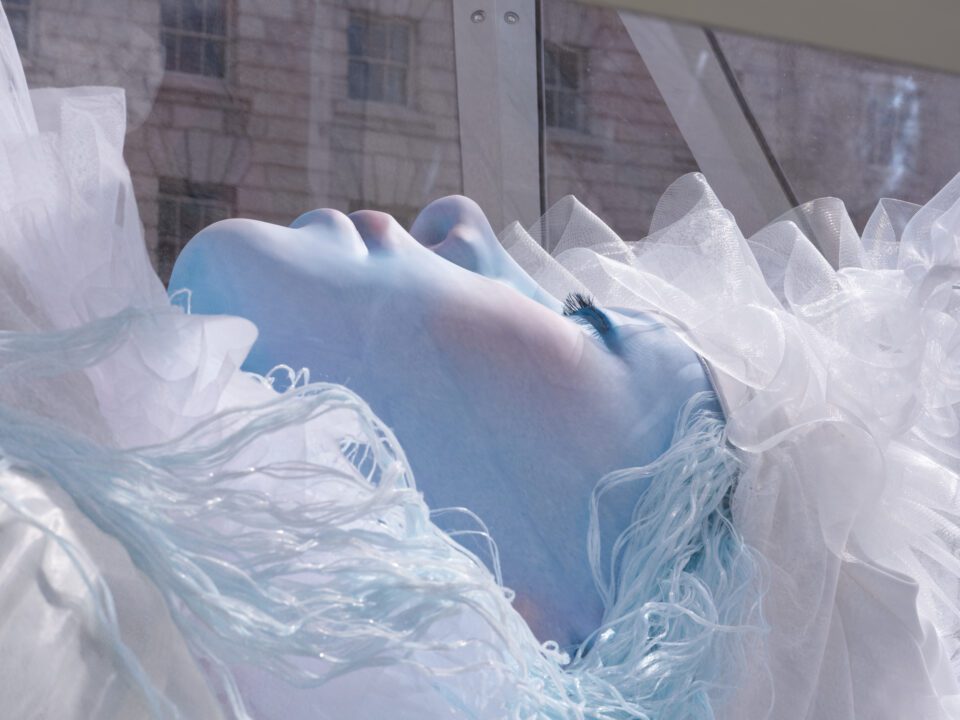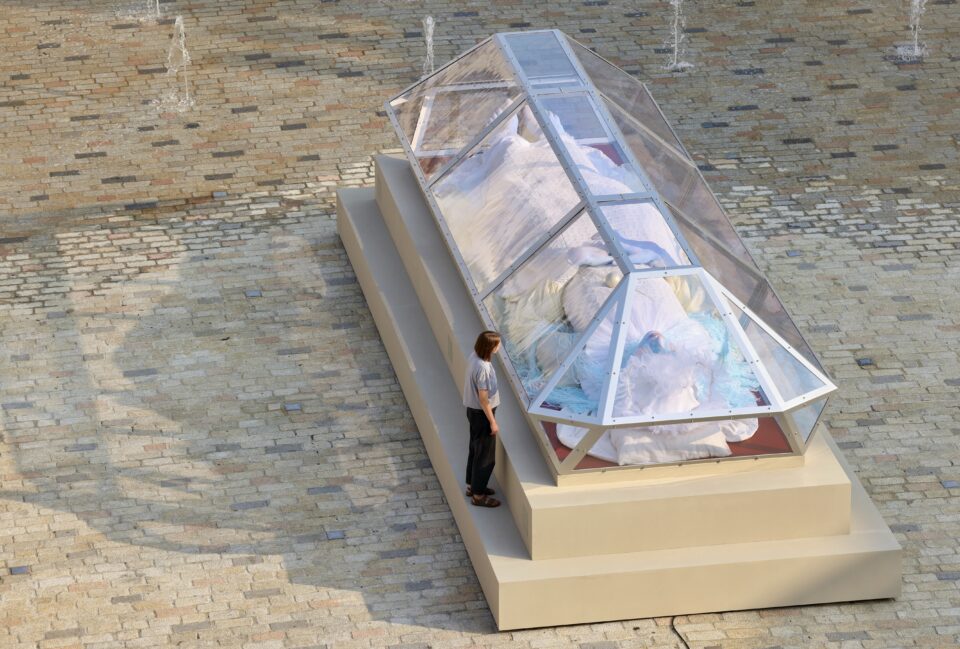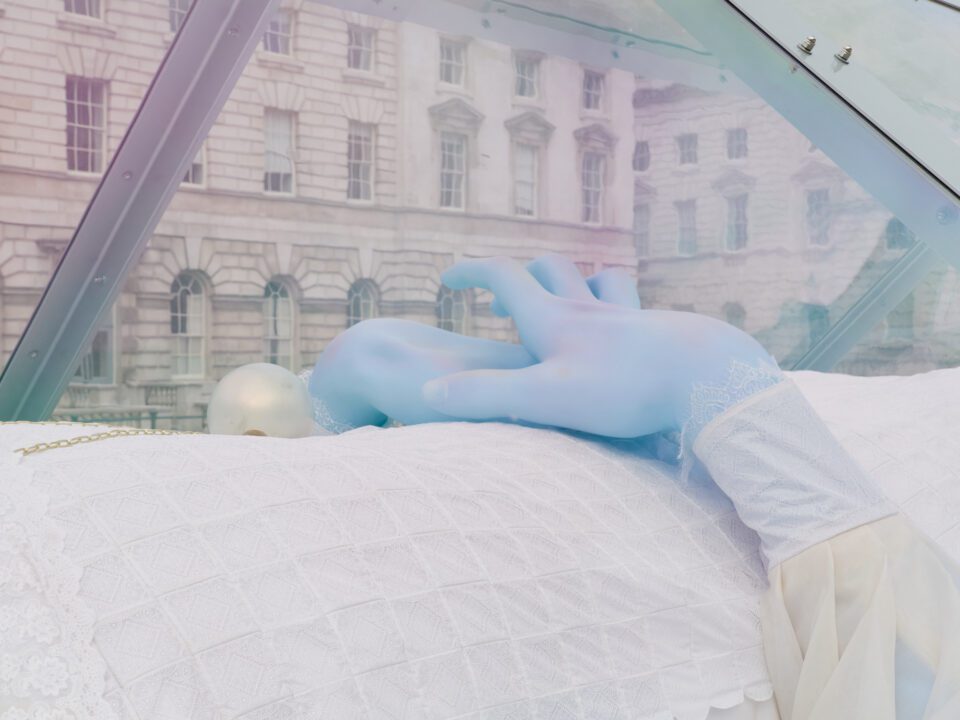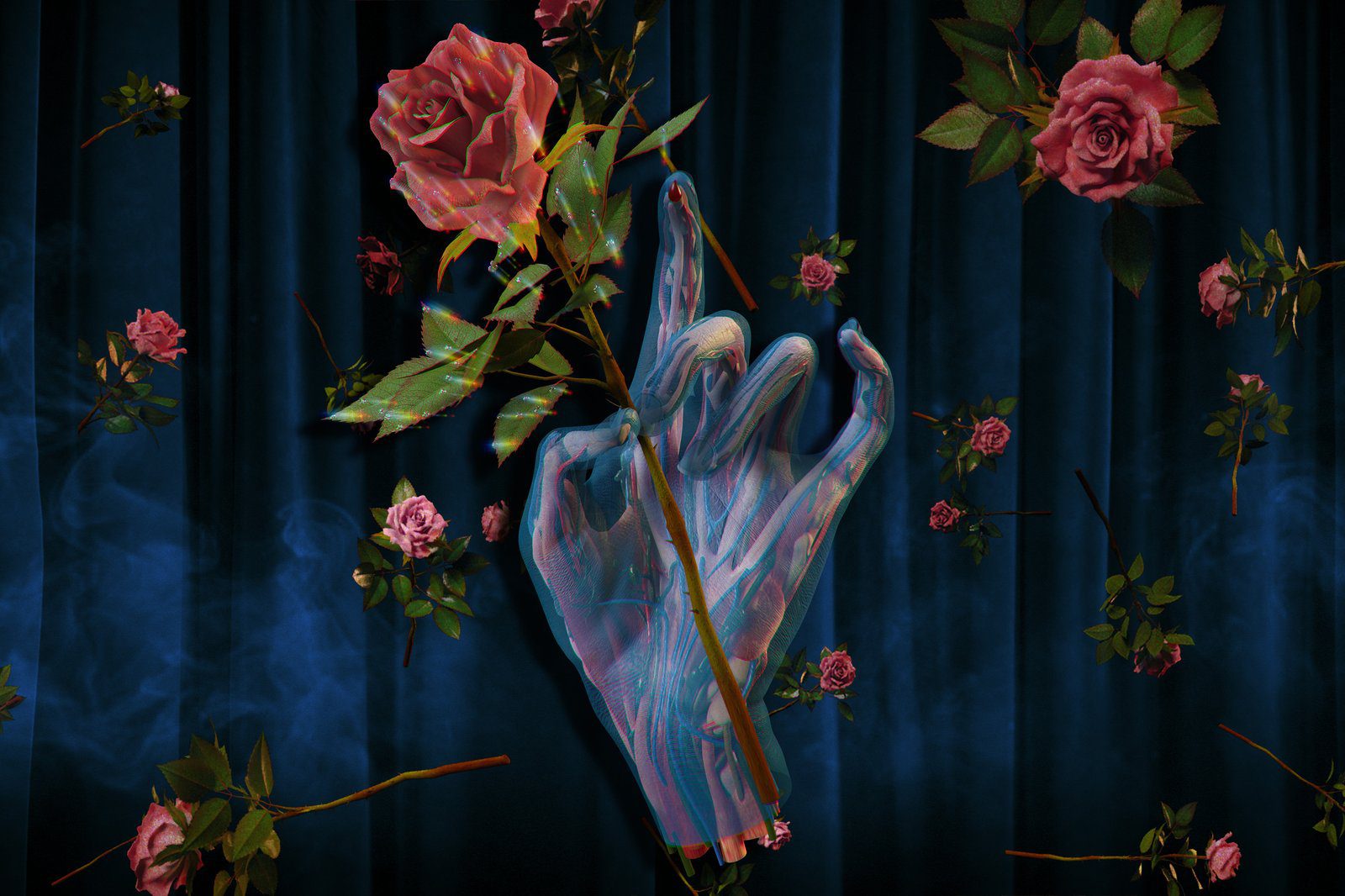To walk into Somerset House’s historic courtyard this summer is to be transported into a fairytale. A monumental sleeping figure, encased in a glass box and draped in soft fabrics, lies at the centre of the space. The installation sits amid a spouting water feature, which protects the slumbering being like the thorns around Sleeping Beauty’s castle. Visitors can climb the plinth to peer inside, or simply sit down and contemplate who this mysterious individual might be. The artist behind this striking work is Turner Prize-winner Tai Shani. The Spell or the Dream was commissioned as part of Somerset House’s 25th birthday celebrations, marking a quarter of a century of commitment to groundbreaking contemporary art. Here, audiences are confronted with questions of what we, as a society, are choosing to ignore.

The luminous, 10-metre-long blue figure, known as The Spell, is hand painted, appearing so lifelike that it feels like a gentle knock on the glass might rouse them. Look closely, and visitors will see the subtle rise and fall of its chest as it gently breathes. The eyes are partially open, on the cusp of waking from a cursed slumber. Shani has a keen ability to summon up familiar tales from childhood and represent them with an eerie twist. At first glance, this could be Snow White in her glass coffin, waiting for her true love’s kiss, or Sleeping Beauty after pricking her finger on a poisoned spinning wheel. Yet, the pearlescent skin and blue hair transform them into something otherworldly. In an interview with The Standard, Shani suggests: “They look to me like a kind of alien Ophelia”, referencing John Everett Millais’ renowned painting. There is something unnerving about the experience of seeing the sculpture, as though intruding upon a moment meant to remain private. This sense of disquiet is only heightened by the accompanying music, a newly composed soundscape by composer, producer and double bassist Maxwell Sterling.

In an interview with London Evening Standard, Shani aptly says: “This project belongs to everyone, and I hope one of its legacies is that public art can be many things and can be odd and uncompromised and engaging and unexpected.” It is clear, when you visit the work, that she’s achieved her aim. Children clamber up onto the plinth, families gather round and sole spectators stand and watch its almost imperceivable movements. For some, the fairytale being may be enchanting, others may find it uncanny. Each is free to take what they want from their experience – something that speaks to the power of art to connect with people in a myriad of ways, often reflecting their own circumstances and worldview.

Although there is space for interpretation and exploration at Somerset House, Shani also shares the mythology behind the piece with visitors, deepening the experience. The figure’s eternal sleep is the result of a spell lasting a millennium, even an eternity, concealing warnings of present and future catastrophes – the violence of colonialism and its legacies, economic inequality, political disaster and environmental collapse. Humanity is reflected in this solitary character. We too “sleepwalk” towards disaster as we choose to ignore warning signs of climate change and societal breakdown. However, the sculpture also represents resistance against the fairytale in which we live – encouraging a recalibration and revaluation of the future we collectively choose. It is a literal and metaphorical wakeup call. It invites a communal effort to imagine and wonder alongside the figure.

The Spell, however, is only half of the story. As visitors move from the outdoor space to Somerset House itself, they are greeted by a line of headphones. Here, they can tune into The Dream, a 24-hour radio broadcast that features brand new contributions, alongside archival work, by an extensive group of 80 academics, artists, economists, musicians and writers. This list includes Brian Eno, Maxine Peake, Max Porter and Yanis Varoufakis. They explore dreaming as a radical act, inviting audiences to imagine new and hopeful ways of being. Standout commissions include artist Cécile B Evans’ adaptation of French surrealist Antonin Artaud’s play, A Spurt of Blood; poet, musician and activist Moor Mother’s radio piece, which draws inspiration from the Old Testament to address ideas of ancestry and time; and a new experimental sound piece responding to the ancient Popol Vuh. To listen to the radio is to gain an insight into Shani’s intention behind the sculpture. It is an opportunity to consider new perspectives on the future, criticisms of our modern world and alternative ways of being. The fact that there are so many contributors means that each visitor is almost guaranteed to have a unique experience, which is a fitting reflection of Shani’s message: there are endless ways of being and each of us brings something fresh and important to the conversation. It is only in listening to the broadcast that the slumbering sculpture can reach its full, meaningful potential.
In creating The Spell and The Dream, Shani has made space for unity. Both her work with a variety of artists and thinkers, and her desire for all generations to engage with the work, promote collaboration. Her choice of contributors are people who make Shani feel “in love with life and the world”, and it would be difficult for visitors to Somerset House to leave without feeling the same way.
Tai Shani: The Spell and the Dream is at Somerset House until 14 September: somersethouse.org.uk
Words: Emma Jacob
Image Credits:
1. Tai Shani, The Spell or The Dream.
2. The Spell or The Dream by Tai Shani © David Parry, PA Media Assignments.
3. The Spell or The Dream by Tai Shani © David Parry, PA Media Assignments.
4. The Spell or The Dream by Tai Shani © David Parry, PA Media Assignments.
5. The Spell or The Dream by Tai Shani © Christa Holka.




